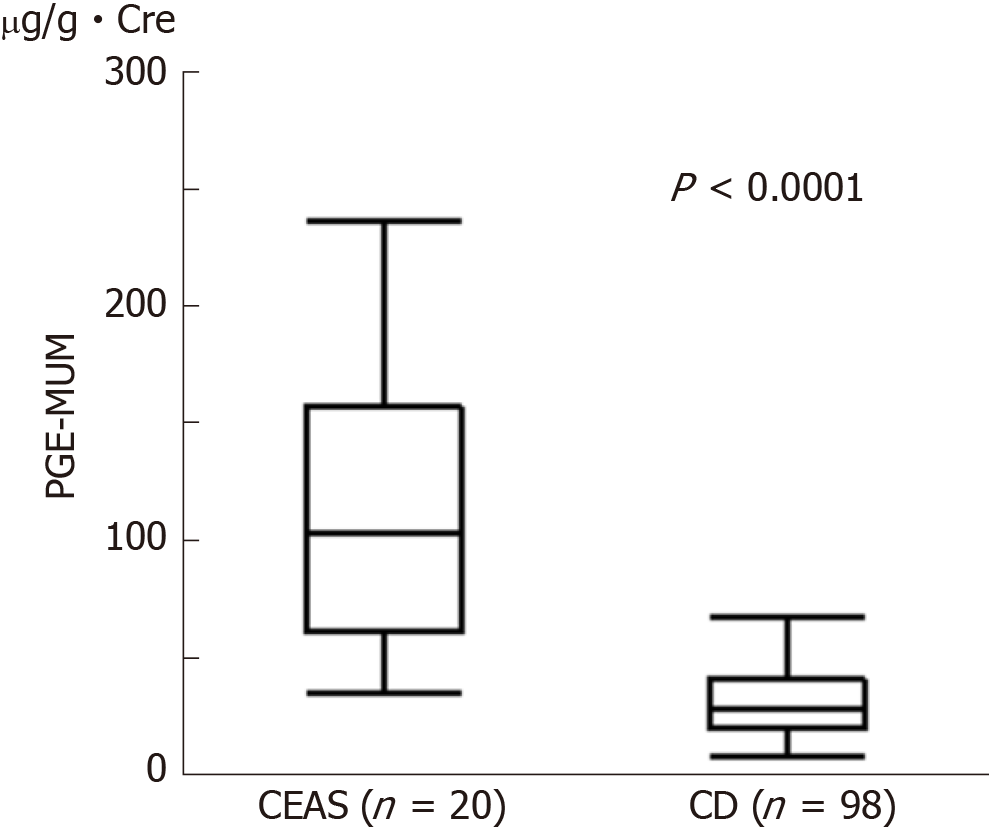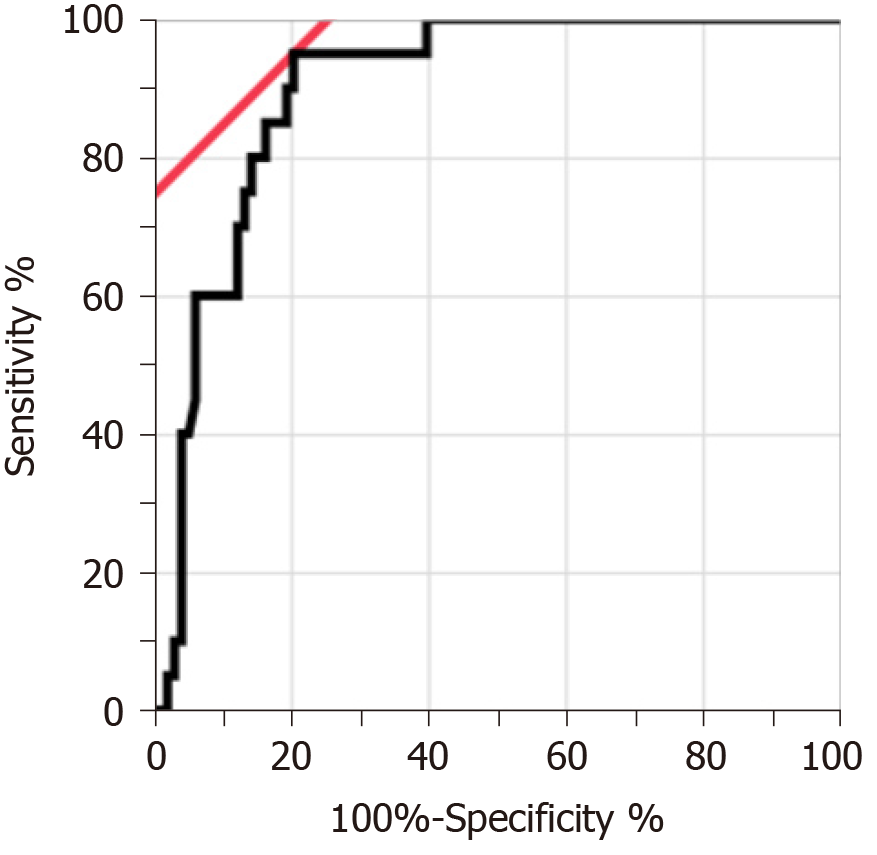Copyright
©The Author(s) 2019.
World J Gastroenterol. Apr 14, 2019; 25(14): 1753-1763
Published online Apr 14, 2019. doi: 10.3748/wjg.v25.i14.1753
Published online Apr 14, 2019. doi: 10.3748/wjg.v25.i14.1753
Figure 1 Comparison of Prostaglandin E-major urinary metabolites concentrations between chronic enteropathy associated with SLCO2A1 gene (n = 20) and Crohn’s disease (n = 98) groups.
Prostaglandin E-major urinary metabolite concentrations in the chronic enteropathy associated with SLCO2A1 gene group were significantly higher than those in the Crohn’s disease group [median (interquartile range): 102.7 (62.0-155.0) µg/g × Cre vs 27.9 (19.6-40.0) µg/g × Cre, P < 0.0001]. Mann-Whitney U-test. CEAS: Chronic enteropathy associated with SLCO2A1 gene; CD: Crohn’s disease; PEG-MUM: Prostaglandin E-major urinary metabolite.
Figure 2 Receiver operating characteristic curve of Prostaglandin E-major urinary metabolites concentrations for differentiation between chronic enteropathy associated with SLCO2A1 gene and Crohn’s disease.
The area under the receiver operating characteristic curve was 0.90 (95% confidence interval, 0.82-0.95). The optimal cut-off value was 48.9 µg/g × Cre.
- Citation: Matsuno Y, Umeno J, Esaki M, Hirakawa Y, Fuyuno Y, Okamoto Y, Hirano A, Yasukawa S, Hirai F, Matsui T, Hosomi S, Watanabe K, Hosoe N, Ogata H, Hisamatsu T, Yanai S, Kochi S, Kurahara K, Yao T, Torisu T, Kitazono T, Matsumoto T. Measurement of prostaglandin metabolites is useful in diagnosis of small bowel ulcerations. World J Gastroenterol 2019; 25(14): 1753-1763
- URL: https://www.wjgnet.com/1007-9327/full/v25/i14/1753.htm
- DOI: https://dx.doi.org/10.3748/wjg.v25.i14.1753










